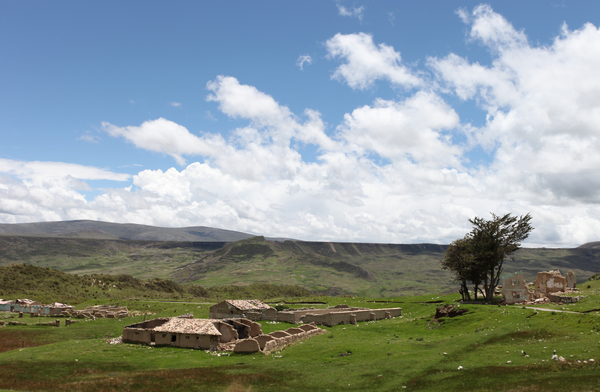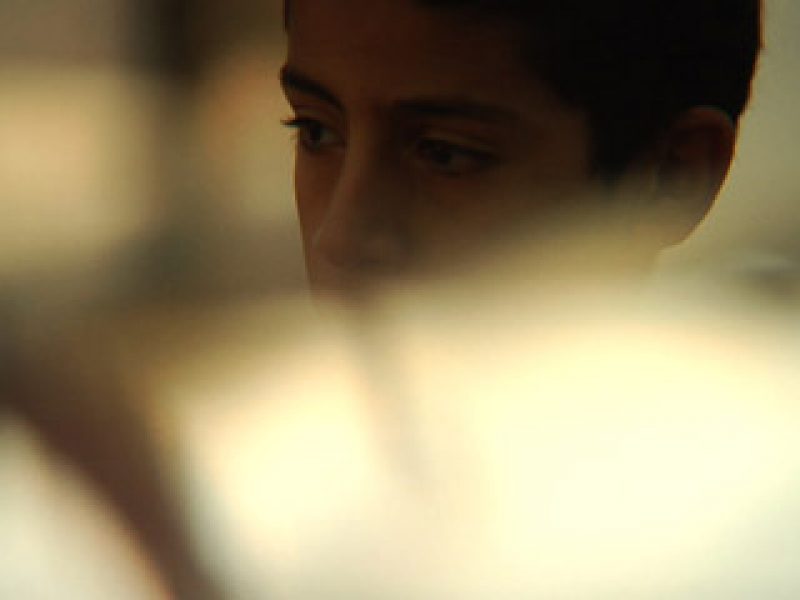The first work I saw of Corin’s was After School Special from 2009. It was a couple of years old when I saw it, but I definitely remember recognising a certain quality in it, a way of working that always colours for me, that I can hear somehow. And I recall that feeling of something new, not the kind of jagged new that comes from appropriation discourses on found footage, but a much more nebulous, floating state of alterity, an altered state.
The work re-edits a 1979 high school movie called Over the Edge starring a very young Matt Dillon, itself based on an 1973 San Francisco Examiner article, ‘Mousepacks: Kids on a Crime Spree’, about juvenile property vandalism in the planned community of Foster City, California. The term After School Special relates to ABC’s series of educational made-for-television movies that aired between 1972 – 97. In this sense, the altered state is not just a formal one of repurposed material but of sociopolitical transition and formation, the structure of the planned community, played out between the educational institution and its oppositional teenage cohort. As in the line that repeats, “In total everybody lasted about 4 years”, there is a short-livedness of each turn of resistance, structures replicating at every level, every shift folding back into and against its predecessor, “both different and the same”.
The dialogue ranges from excerpted re-edits of podium speeches taken from Ronald Regan’s ‘Creative Society Speech’ of 1966 and Jean-Luc Godard’s Le Gai Savoir from 1969 to morphing into interiority in the mesmerising passages from Air around the earthe written by Shayne Ehman.
These transitions are liquid crystal, moving from solid to liquid, ossifying and disintegrating from one moment to another, and their perpetual politics with it. It is temporality that marks this precarious statehood, not borders, classification or description. The dubbing is off sync, pictures cropped, phone calls unanswered, keying in and zooming into abstraction, its artifice is evident, its quality of being out of time, narrative dialogue to poetic syntax folding and unfolding absorption.
If After School Special stretches or distends time in lag or loss, Lens Prism from 2010 speeds up and overlaps narrative, as its protagonist says, in “parenthesis only to be split again by another parenthesis”. It is prismatic in that the narrative lens displaces, doubling and splitting histories across each other. Rather than editing existing footage, the monologues, as told by our protagonist from a large empty black lit stage, fragment themselves in a singular trajectory, shifting from the description of a photo, to a memory, to an image and collapsing only to start over in another image, a story, moving seamlessly from formal device to emotive affect. Props and smoke hazed lighting are bare but obtrusive, coloured minimum, instead words build spectral structures; house exhibits, catalogues, collections, a couple at a museum, a public at the Crystal Palace. These rapid moving images are less analogous to the surreal than a radical form of realism, a liveness at the speed of felt thoughts; “to illicit in the reader that form of attention that is distracted and yet pertains to a keep an attention to detail, one that though appearing only half observant is in fact constantly assessing, classifying, comparing. What’s this? What’s going on here?” The set up in Lens Prism is perhaps not so much one of distancing but of zooming while pulling back, a vertiginous not ever quite finishing beginning, where proximity is felt without yielding proficiency. Transitioning from one image to another here is lived in a condition of loss, not remembered and, in that sense, seen all over again, without criteria, without memory, without expectation, as with our protagonist, only feeding the birds.
This consistent inquiry into not only imaging but also the political imagination is most specifically present and personal in The Foxes, a work from 2013. Beginning with material from Corin’s father, social anthropologist Gavin A. Smith’s slide archives, the narrative position here is not just uncertain in viewing but in reviewing, for both reader and writer, father and daughter. This pulls back apart the prismatic adjustment into double vision, not spatially but temporally – it presents history non-hierarchically, neither the past validating the present, nor the present updating the past. Without the primacy of origins images are left to circulate, groundlessly doubling and redoubling, being viewed and reviewed; “Is the woman in the leopard print top watching her lover leave or is she shielding eyes from the sun expectantly as he is on the approach?” This doubling is referenced in the object of the fedora, a hat worn by her father and a “prop used to assist in doubling, replacing the lead with a stunt man, so that feats accomplished by a group can be attributed singly and simply.” Singular and original primacies are, in this sense, both modes of classification that allow for value and rights to be ascribed and accumulated rather than distributed.
Returning with her father to Huasicancha in Peru where he was based in 1973, they find the community’s struggles over rights of property and land have been repeated over and over again, in transit and exile. And now, with land but little organization, it is a community held together not by consensus but by this common lack. The Foxes‘ acts of self-appropriation are more than a self-reflexive questioning or re-inscribing but rather a radical proposition for a discursive and collaboratively present politics, double over rather than under exposed.
And such a quality of opacity hangs thick in the mute silences and unanswered calls of La Giubba‘s sun filled, bleached out air. Made with Canadian artist Tony Romano, La Giubba (2015) extends paired collaboration more broadly, slowing and extruding out each act of doubling, each lag and loss, across a cast of couples; father and daughter, uncle and nephew, elder and younger, birds and humans. These intergenerational and interspecies dialogues switch between registers of affinity and separation as these set of twos coalesce and break apart. Inspired by Aristophanes’ comedy The Birds, which tells the story of the ascent of an interstitial kingdom of the birds between the Gods and mortals, La Giubba‘s feature length plays in such gaps across four colour coded languages; Arberesh, Italian, Birds, Albanian. As in The Birds the parabatic structure departs from the standard, with each part, including the birds, potentially the chorus of another. This is not so much a doubling but an addition, both-and not either-or. Where, as the two theatre actors discuss, the figure of Pulcinella or Punch, of the Commedia dell’arte is both male and female, black and white, a flightless bird, a transitory character of the underworld made material. In this way, structures turn on their heads, flipping and turning in twilight, half light, all theatre, all life, and above all in motion, transformative. The father journeying with his young daughter to teach her to swim, to be strong enough to move across seas, the Canadian actor joining his actor uncle, lost in the alleys and unable to speak the language. As the title La Giubba indicates ‘the show must go on’, these gaps and loses in language are not only that but also spaces, where, as the birds mutely chorus, an introduction to freedom is also being left to an endless vastness.
I first watched some of these works in about 2011, maybe 12, I watched them in the editing suite on a stack of monitor display screens. I have seen the work several times since then, perhaps not in full but in fragments, in shows and screenings, in talks, in published texts and images, in recounting it. I remember the slips of lips to word, the heavy swish of foley and the dubbing of the voices on, not into, soft young mouths. Photos overlapping, slides switching in the carousels, images in transit offset by uncertain readings. Twin modalities of artifice and absorption constantly coming together and breaking against each other. These are works that pull and push formal and conceptual focus to inarticulate and question an always already over, and still abundant, politics.
Ghislaine Leung, lives and works in London and Brussels. Recent exhibitions and projects include The Shift at Flat Time House, Le Bourgeois at 3236rls, BRINK at CGP London, Re: Re:, New Work, London, Violent Incident, Vleeshal, Middelburg, Prosu(u)mer, EKKM, Tallinn, Performance Capture, Stedelijk, Amsterdam, A Bright Night with Serpentine Galleries and LUX, London. She is editor of Versuch Press and member of PUBLIKATIONEN + EDITIONEN. She is resident at Hospitalfield Summer 2016 with a forthcoming performance at Studio Voltaire, London in May and solo project at WIELS, Brussels in September 2016.



![[sic], 2009, Eric Baudelaire [sic], 2009, Eric Baudelaire](https://lux.org.uk/wp-content/uploads/elementor/thumbs/SIC15-edi_0-ptb8b5yid53olj96jrjmtt28342ke8xe3au1tmv3w0.jpg)


